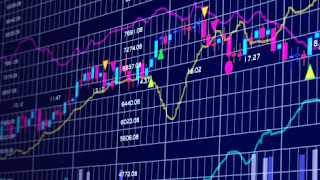The country's economy is characterized by the following data: nominal GDP for 2017 is $ 237 billion, which is 46 thousand dollars per capita.
GDP structure: agriculture - 3%, industry - 27%, services - 70%.
The country is highly industrialized with a high proportion of high-tech industries. The structure of the industry is very complex, despite the small number of the working population (less than 3 million people).
The mining industry, based on minerals — iron ore, non-ferrous metal ores — copper, lead, zinc, chromium, nickel, cadmium, mercury, selenium, cobalt, gold, silver, and non-metallic minerals — limestone, apatites, talc, building materials.
The leading industries are ferrous and nonferrous metallurgy, mechanical engineering (shipbuilding specializing in tankers and icebreakers of various capacities, electronic equipment, machinery for mining, ferrous and nonferrous metallurgy, forestry, food and light industry, printing, pulp and paper, woodworking and other industries).
A prominent place in the structure of the economy is chemical, textile, clothing, footwear, food industry.
Mechanical engineering manufactures machine tools, agricultural machinery, electric motors, electrical products, cable products, trucks, marine engines, elevators, escalators, tractors for the forest industry and other products.
Finland is a country that, for the first time in the world, began industrial development and mass production of mobile phones by Nokia, which was a real revolution in communication between people.
Agriculture diversified, highly mechanized.
Arable land is 2 million hectares. Crop specializes in growing crops. The grain harvest amounts to 5-6 million tons. The farms are small, an average of 19 hectares, but in recent years there has been an enlarged farm due to the introduction of more productive machinery for tillage and harvest. The country began year-round production of tomatoes.
Many farms began to grow commercially blueberries, raspberries, strawberries, mushrooms, but given the laboriousness of their collection, farmers are forced to attract labor from other underdeveloped countries (Ukraine, Thailand, and others).
An important place in crop production is potato and animal feed production. In recent years, began to grow fibrous hemp, hops and even grapes for wine production.
Despite the important role of agriculture in the economy of the country, nevertheless, forestry occupies the main place in agriculture, as a source of raw materials for the development of the woodworking and pulp and paper industries, whose products are sold on the world market.
The fishing industry also received development, since in the past five years the demand for fish products abroad has risen sharply.
Livestock, as a branch of the economy, specializes in the production of dairy products, beef, and mutton meat. Pig production is not sufficiently developed, therefore, to meet the needs of the domestic market, pork is purchased for import.
Poultry farming is developing for the production of eggs and meat, but the poultry farms are not widely spread.
On a limited scale in Lapland, they are engaged in reindeer herding and hunting for animals.
Transport is developed at a high level and includes all its types, which allows you to quickly get to anywhere in the country.
Foreign trade in 2016: exports amounted to $ 61.5 billion - various types of paper, petroleum products, rolled stainless steel, automobiles, lumber, food and light industry products, electrical engineering and other products that were bought by such major countries as Germany, Sweden, and the USA, The Netherlands and China.
Imports - $ 57.4 billion - crude oil, petroleum products, automobiles, computers, chemical, light, pharmaceutical, and other industries. The main suppliers are Germany, Sweden, Russia, China, the Netherlands.
The country's population is 5.5 million people. The level of urbanization exceeds 84%.
Life expectancy: men - 79 years, women - 83 years.
In many indices of personal development and economy, the country is among the top twenty countries out of 197 independent states of the world. There is something to learn from the Finns, not only in terms of housekeeping but also to the mind.






